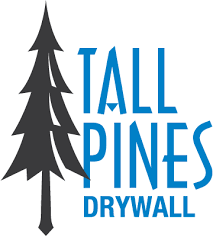5 Drywall Installation Safety Tips
Above all else, safety is the number one priority for us at Tall Pines Drywall. We strive to bring down rising statistics showing serious accidents and even fatalities. While there are always some common factors we can point to, more than likely there were issues with safety protocols being ignored for speed or not put together very well in the first place.
To make sure you don’t become a statistics, here are five key important tips for drywall safety.
Get the best personal protective equipment
You are doing nothing but protecting yourself long term by practicing safe drywalling techniques. Personal protective equipment is a crucial part of drywall safety. safety glasses and a mask will protect you from dust and other chemicals. Protective steel toed boots will protect your feet if a sheet of drywall accidentally falls on them. Gloves with PVC dots improve your grip to minimize your chances of dropping something on you or your partner.
Use proper lifting techniques to save your back
A single sheet of drywall can weigh anywhere from 55 to 120 pounds. Work in pairs. Avoid lifting while you bend or twist but you also don’t want to be standing there holding drywall for an extended period of time either. When possible use carts and dollies rather than moving anything by hand. Use a jack or lift to hold drywall.
Use proper drywall tools
Don’t skip quality because of the price tag. It is essential that all tools you have are proper quality. Saving yourself 40 dollars doesn’t matter when broken equipment could lead to serious injury. Use brands that you are familiar with or take advice and recommendations from drywall professionals.
Know the materials you are working with
Understand the materials you are working with to understand the hazards they inherently come with. The easiest way to do this is to create a material safety data sheet. You can have columns describing the risk of exposure and what PPE is needed to work with said materials. Make this information clear and easy to understand. Also have it available for your team’s use on the fly.
Minimize dust exposure
Respiratory protection is one of the biggest concerns when working with drywall installation. Do what ever it takes to practice good ventilation on your job site. If you are feeling light headed and/or dizzy from respiratory distress, do not be afraid to leave the job site to regroup. Stay hydrated!
Call Tall Pines Drywall for drywall repair in Winnipeg you can trust. We have over 25 years of experience of commercial and residential services, including drywall repairs, replacements, installation, remodels, new construction, and more. Request a free quote today!


